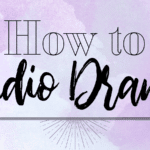Using Instagram to Reach and Grow Your Podcast’s Audience

One thing that every podcaster works on day in and day out is growing their audience. It’s the constant thought at the back of every decision they make. Reaching your intended audience is the key to getting your message, your story, out there.
There are many ways that podcaster’s can go about reaching their audience, but the most underutilized format is Instagram. The visual social media platform is growing in users daily and with the help of its algorithms, developer tools, and this article you can expand your current Instagram audience or begin building one today for your podcast.
Whether you have an Instagram or not, the first place that is going to pull in new listeners and engage your audience is your bio section. When someone goes to an Instagram profile the profile picture, bio, and website are all the first things they are taking to. All of these elements need to be working to showcase what exactly your podcast is all about.
Make sure it has the name of the podcast and the graphic or logo in the profile picture slot. Your bio should cut straight to the point of what your podcast is all about. Don’t set the link in your profile to just direct listeners to your podcast’s website but update it frequently to take people to the most recent episode; maybe even a link to your next guest’s website. Use the bio section to really pinpoint what your podcast is about and why people should listen to it.
Make your bio work for you.
Don’t fall victim to believing that you can only use words in your bio either. Make it come to life and draw in more of your audience by using hashtags that are geared toward your intended audience. If your show is all about mental health and recovery, find the top hashtags for those topics and post one or two of them in your bio. It’ll direct people who follow and like that hashtag back to your profile where your bio will lead them to all the great content that you’re putting out.
The other important thing to mention about hashtags is the debate over whether to put them in the captions of your uploads or in the comments. Both camps have great points to them. By putting hashtags in the comments of your post, it keeps everything in the captions nice and neat. While having the hashtags in your caption is a direct link back to your post. Either way, a majority of people are going to find your content on Instagram through hashtags.
Use them. Use them well.
Some simple ones to get you started and help you find listeners, build a community, and network with other podcasters are:
- #podcasts
- #podcastersofinstagram
- #podcastcommunity
For some podcasters out there, they’ll steer clear of Instagram because of the selfie culture associated with it. But there are ways to show who you are without actually ever showing your face. Yes, giving your audience a look at what you look like will, in some cases, make a connection form and reach people that look like you.
But if you want a diverse community of listeners that don’t all look like you, there is a way of still giving your listeners a taste of the voice behind the mic. Borrow from the writing community and share scenes from your creative process. A messy dry erase board with ideas stacked on sticky notes and scribbled overtop each other. Maybe you’re neater and have a calendar tacked somewhere in your space that shows your schedule of interviews. Show your audience how much work you put into each episode. That’ll be worth a thousand candid smiles.
The Armchair Explorer Podcast only has a profile picture of the person behind the podcast. All other posts are of the subjects or about what the theme of the episode. Each post is breathtaking and unique to the podcast. It also gives listeners a chance to get a feel for what the podcast is all about. Some other accounts to check out that focus their Instagram feed on their work instead of themselves would be Real Talk with Dumas and American Slacker Podcast.
On the other end of the spectrum, there are Instagrams like Podcast of Color and Creative Empire Podcast where the creators put themselves at the front of their feed. Both styles are acceptable. It all comes down to brand and sticking to it so that your feed has a consistent tone, voice, and color scheme.
Whether your podcasting about sports or the latest advancements in cooking appliances, your Instagram should have a brand that relates to your podcast. Maybe you’ve noticed this type of consistent style while browsing through certain profiles of major influencers or other podcasts. This type of content production is pleasing to the eye and creates a rounded experience for your audience to get an idea of what type of podcast they are getting into.
That may sound advanced or over some folx’s heads, but a consistent style is easy if you plan ahead. Forethought is key. If you already have an Insta for your podcast, but don’t have a consistent theme or style, that’s okay. It’s never too late to create one and roll it out for your audience. Take a moment to nail down what the tone of your podcast is. Darker content and themes go best with darker designs and depictions visually.
If your podcast is about book reviews or recommendations, make your account show that through posts featuring the books you’re talking about on the show like the Spooky Sisters Book Club. Without evening scrolling down to check out the rest of their page, a potential listener will be able to tell if this is a show they want to check out. Whatever your podcast is about, make sure the visual layout and themes speak to that to help entice and pull in new listeners and strengthen your brand within your audience and community.
Once you have a clear idea on what theme you want, begin creating content for it. Create as much of a backlog of content as you can. Keep adding to it. Week after week. Month after Month. Just like some podcasts have editorial or show calendars and themes that they will cover over a span of time make your Instagram have the same planning. There are many resources out there for scheduling posts, making the whole process more automated and easier.
Hootsuite, Buffer, Thryv, and tons of other social media management applications allow you to plug in all your posts at once to be uploaded at the desired times. Most of these applications offer analytics to help you boost your reach, understand your audience, and track your progress. But Instagram has it’s on analytics for its business or creator accounts. You’ll be able to see the busiest times of day, what posts have gotten the most engagement, and where your audience is located geographically. There’s more cool tools and insights that having a business or creator account offer like the ability to run targeted ads, but there is a downside worth mentioning.
Instagram and other social media platforms out there were made for social engagement. Human to human. Not business to human, so many of the algorithms on there penalize those types of accounts. Personal accounts are ranked higher on people’s feeds while business and creator accounts are treated like unpaid ad space often being pushed to the bottom of a person’s feed. That means you could publish a post, but only some of your audience will see it and only after scrolling for a while. That’s why there are some who recommend keeping your podcast’s Insta as a personal one and use outside analytics to learn about your audience.
Whichever account type you choose, make it one that is approachable by your audience. Keep it public. Don’t leave comments unliked or uncommented on. Engage with your audience to fill in the gaps in the bridge between listener and podcaster. Let them know that their words and thoughts matter as much to you as yours do to them.
That leads to a question that many podcasters have already answered. Who is your audience? What do they want to see from you and your podcast, and when? If you’re a sports podcaster, it would be beneficial to know when the games you’re covering are happening, so that you can time the release of content on your Insta to get your audience fired up, not just about the game, but about your podcast.
The MasterMind Podcast is a great example of a podcast that knows their audience and their brand. The have premade templates, consistently share sound bites from episodes, showcase in their bio what type of podcast they are. Their hashtags are on point and aimed at grabbing the people they want to know about their podcast.
There are tons of great examples of how to run your podcast’s Instagram page. There’s just as many good examples as there are bad. It’s up to the podcaster to create that wider community and audience base by being present on their social pages and engaging with their audience. Below are a few more tips to keep in mind when creating or maintaining your podcast’s Instagram page.
PRO TIPS:
- Use stories to your benefit by consistently uploading content to it that is different than what you post.
- Design a branded template for quote graphics to highlight special moments from your show. Canva, Pablo, and Easil are great places to start designing branded content for your podcast.
- Use audio clips to pull in listeners and give them a taste before releasing an episode. Check out Wavve to get started making audio graphics.
- Follow other podcasts, podcasters, and people that fit your brand to grow your community.
- Use your platform to boost guests, themes, and other content related to your podcast.
- Don’t post links in your posts, because Instagram doesn’t not allow people to click on them—use your bio for all your links.
- Use Linktr.ee to link to all your casting platforms.













2 Comments
Pingback The New York Times buys Serial Productions - Podcasts.Marketing
Pingback The New Wave of Podcasts Shaking Up Chinese-Language Media - Podcasts.Marketing
Comments are closed.